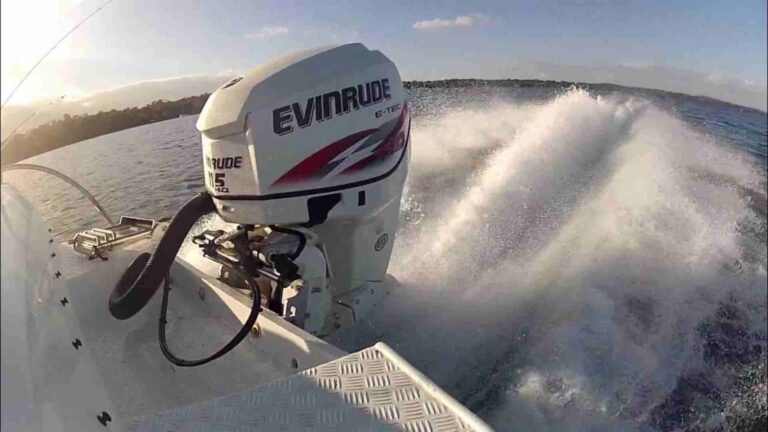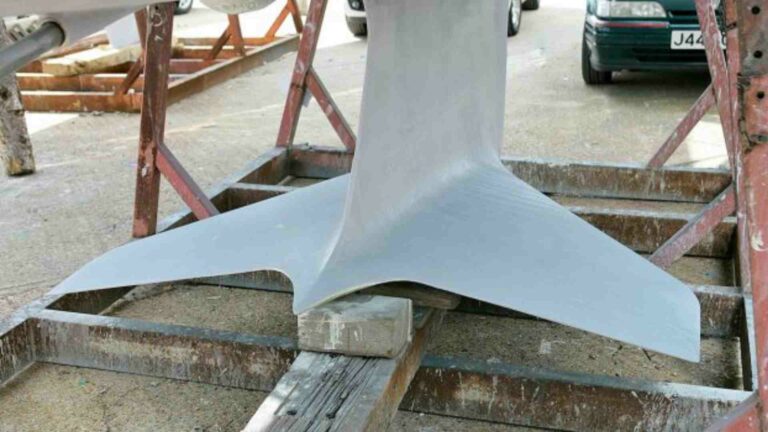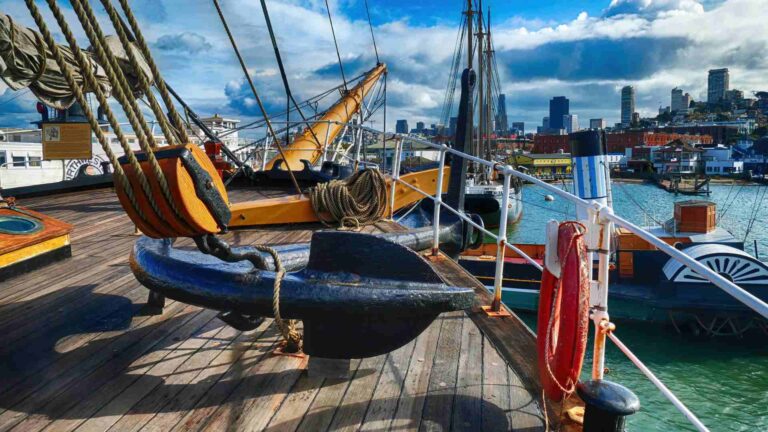The Advantages of Aluminium Decking: Guide
Discover the advantages of aluminium decking: durability, low maintenance, and eco-friendly design for your outdoor space. Learn why it’s the top choice!
Aluminium decking has emerged as a leading choice for outdoor spaces, offering a blend of durability, low maintenance, and aesthetic versatility. Whether for residential docks, pontoon boats, or backyard patios, aluminium decking outperforms traditional materials like wood and composites in many ways. This guide explores the key benefits of aluminium decking, compares it to other materials, and provides practical insights for homeowners, boaters, and contractors. With a focus on ShoreMaster’s innovative aluminium decking solutions, we’ll also cover design options, costs, and installation considerations.
What is Aluminium Decking?
Aluminium decking consists of interlocking panels made from high-quality, marine-grade aluminium. Designed for outdoor environments, it’s used in pontoon boats, docks, and residential decks. Its lightweight yet robust nature makes it ideal for aquatic settings and high-traffic areas. Available in various colors, textures, and finishes, aluminium decking combines functionality with modern aesthetics.
Unlike wood, which requires frequent sealing, or composites, which can harbor mold, aluminium decking is engineered to withstand harsh conditions. Its corrosion-resistant properties and slip-resistant treads make it a safe and reliable choice for waterfront applications and beyond.
Key Advantages of Aluminium Decking
Aluminium decking offers a range of benefits that make it a standout material. Below, we delve into its primary advantages:
1. Unmatched Durability and Longevity
Aluminium is highly resistant to water, UV rays, and extreme weather, ensuring it remains intact for decades. Unlike wood, which can rot or warp, or composites, which may peel, aluminium maintains its structural integrity. Its rust-resistant properties make it ideal for docks and pontoon boats exposed to constant moisture.
For example, ShoreMaster’s aluminium decking panels are powder-coated for enhanced durability, offering a finish that resists fading and cracking. This longevity reduces replacement costs, making aluminium a smart long-term investment.
2. Low Maintenance Requirements
One of aluminium’s biggest selling points is its minimal upkeep. Unlike wood decking, which demands regular staining and sealing, aluminium only requires occasional cleaning with soap and water. Its resistance to rust, stains, and corrosion eliminates the need for costly treatments.
For pontoon boat owners, this translates to more time on the water and less time scrubbing decks. ShoreMaster’s anodized aluminium decking, used in commercial dock systems, exemplifies this maintenance-free quality, requiring only periodic rinsing to look brand new.
3. Lightweight Yet Strong
Aluminium’s low density makes it significantly lighter than wood, composite, or plastic decking. This lightweight nature simplifies installation and transport, particularly for pontoon boats and seasonal docks. Despite its weight, aluminium boasts an excellent strength-to-weight ratio, providing robust support for heavy loads and rough waters.
In pontoon manufacturing, aluminium C-channels, U-channels, and hat channels reinforce the deck, ensuring stability without adding bulk. For DIY redecking projects, aluminium’s ease of handling reduces labor time and effort.
4. Resistance to Rot, Warp, and Pests
Unlike wood, which is prone to rot, warping, and insect damage, aluminium is impervious to these issues. Termites, carpenter ants, and other pests that plague wooden decks have no effect on aluminium. This makes it an ideal choice for waterfront properties where moisture and pests are common.
ShoreMaster’s aluminium decking panels are designed to resist twisting and warping, ensuring a stable surface even after years of exposure to sun and water.
5. Cool to the Touch
Aluminium dissipates heat quickly, staying cooler than wood or composite decking under direct sunlight. This is a critical advantage for barefoot comfort on docks and pontoon boats during hot summer days. ShoreMaster’s white and tan painted aluminium decking options are particularly effective at reflecting heat, enhancing user comfort.
6. Eco-Friendly and Sustainable
Aluminium is 100% recyclable, making it an environmentally responsible choice. Unlike wood, which contributes to deforestation, aluminium decking is often made from recycled materials. Its long lifespan further reduces environmental impact by minimizing the need for replacements.
For eco-conscious homeowners and boaters, aluminium decking aligns with sustainable living goals without compromising performance.
7. Versatile Design Options
Aluminium decking is available in a variety of colors, patterns, and finishes, allowing for customized aesthetics. ShoreMaster offers several options:
- White Painted Aluminium: A classic, clean look that complements modern waterfronts.
- Tan Painted Aluminium: The most popular choice, offering a natural, earthy tone.
- Woodgrain Painted Aluminium: A new innovation that mimics the look of wood (e.g., Gray Oak) while retaining aluminium’s benefits.
Powder-coated finishes ensure vibrant, long-lasting colors, while slip-resistant treads enhance safety. These options make aluminium decking suitable for both recreational and commercial applications.
8. Cost-Effectiveness Over Time
While aluminium decking has a higher upfront cost than wood, its durability and low maintenance make it cost-effective in the long run. For pontoon boats, redecking with aluminium can cost $500–$2,000, depending on boat size and material quality. However, savings on maintenance and replacements offset the initial investment.
For docks, ShoreMaster’s aluminium decking eliminates the need for frequent repairs, further enhancing its value proposition.
Comparing Aluminium to Other Decking Materials
To understand why aluminium stands out, let’s compare it to other common decking materials used in pontoon boats and docks. The table below summarizes key attributes:
| Material | Weight | Durability | Maintenance | Cost (per sq. ft.) | Pros | Cons |
|---|---|---|---|---|---|---|
| Aluminium | Lightweight | High | Low | $10–$20 | Rust-resistant, cool, versatile | Higher initial cost |
| Marine-Grade Plywood | Medium | Moderate | High | $1.50–$2.50 | Lightweight, strong | Requires sealant, not waterproof |
| Treated Plywood | Heavy | Moderate | High | $1–$2 | Rot-resistant, affordable | Chemical disposal issues |
| Composite Boards | Medium | High | Moderate | $6–$10 | Warp-resistant, easy to clean | Prone to mold, needs support |
| Vinyl Boards | Medium | High | Low | $3–$4 | Waterproof, skid-resistant | Expensive |
Key Takeaways from the Comparison
- Aluminium excels in durability, maintenance, and versatility, making it ideal for waterfront applications.
- Marine-Grade Plywood and Treated Plywood are budget-friendly but require ongoing maintenance and sealing.
- Composite Boards offer durability but are susceptible to mold and require additional structural support.
- Vinyl Boards provide a wood-like aesthetic with low maintenance but come at a premium price.
For pontoon boats and docks, aluminium’s lightweight and corrosion-resistant properties make it the top choice for performance and longevity.
Aluminium Decking in Pontoon Boats
Pontoon boats rely on sturdy decking to support passengers, furniture, and equipment. Aluminium is a preferred material due to its compatibility with the boat’s aluminium frame and pontoon logs. Here’s how aluminium enhances pontoon decking:
Structural Support
Aluminium decking is bolted or screwed to pontoon logs, which are also made of aluminium for buoyancy and corrosion resistance. Self-tapping screws with adhesive strips are often used to create secure, leak-proof attachments. This ensures the deck withstands waves and heavy loads.
Rub Rails and Trims
Aluminium rub rails protect the deck’s edges from damage during docking or collisions. They also cover seams for a polished look. Eagle Aluminum, a leading supplier, offers marine-grade rub rails and trims that enhance both functionality and aesthetics.
Customization
Pontoon owners can pair aluminium decking with marine-grade carpeting or vinyl flooring for added comfort. ShoreMaster’s woodgrain aluminium decking provides a wood-like appearance without the maintenance hassle, appealing to traditionalists.
DIY Redecking
For pontoon owners tackling redecking projects, aluminium’s lightweight nature simplifies installation. Essential tools include a circular saw, power drill, and rivet gun. The process involves removing old decking, rewiring, and installing new panels. Aluminium’s ease of handling makes it a DIY-friendly option.
Aluminium Decking for Docks
ShoreMaster leads the industry with its aluminium decking solutions for docks. Designed for both residential and commercial use, their panels offer:
- Slip-Resistant Treads: Ensure safety in wet conditions.
- Anodized Finishes: Ideal for commercial docks requiring minimal maintenance.
- Color Options: White, tan, and woodgrain finishes cater to diverse preferences.
Aluminium’s resistance to rot and pests makes it perfect for docks exposed to constant moisture. Its lightweight design also facilitates seasonal removal and storage.
Design Considerations for Aluminium Decking
When installing aluminium decking, keep these factors in mind:
- Thermal Expansion: Aluminium expands and contracts with temperature changes. Allow proper spacing between panels to prevent buckling.
- Traction: Choose textured surfaces or treads to reduce slipperiness when wet.
- Ventilation: Ensure adequate airflow beneath the deck to prevent moisture buildup, especially for docks.
Cost Analysis
The cost of aluminium decking varies based on application and customization. Below is a breakdown:
- Pontoon Boats:
- Small pontoons (19 ft or less): $500–$1,000
- Medium pontoons (20–22 ft): $1,000–$1,500
- Large pontoons (over 22 ft): $1,500–$2,000+
- Additional costs: Carpeting ($200–$500), rub rails ($100–$300)
- Docks:
- ShoreMaster aluminium decking: $10–$20 per sq. ft.
- Installation costs: $5–$10 per sq. ft. (professional installation)
While aluminium is pricier than plywood, its longevity and low maintenance justify the investment. DIY installation can further reduce costs.
Installation Tips and Safety Concerns
For DIY redecking projects, follow these guidelines:
- Label Wiring: Take photos and use masking tape to label electrical wires before removing old decking. This prevents rewiring errors.
- Handle Wiring Safely: Disconnect the battery to avoid shocks. Wear protective gear when handling electrical components.
- Carpet Installation: Use marine-grade glue for secure adhesion. Apply glue liberally and use a carpet roller for even coverage.
- Tools Needed: Circular saw, power drill, rivet gun, pry bar, hammer, screwdrivers, socket set, wire strippers, voltmeter, and wrenches.
For docks, ensure proper spacing and secure attachments to prevent movement in rough waters.
Chart: Aluminium Decking Workflow for Pontoon Redecking
Below is a flowchart illustrating the redecking process for pontoon boats using aluminium decking:

This workflow ensures a systematic approach to redecking, minimizing errors and ensuring safety.
Cleaning and Maintenance
Aluminium decking is easy to clean. Use a hose and boat soap (e.g., Better Boat Deck Cleaner) to remove dirt and stains. For pontoons with carpeting, vacuum regularly and use marine-grade cleaners to prevent mildew. Avoid pressure washing composite or vinyl decking to prevent peeling.
Why Choose ShoreMaster and Eagle Aluminum?
ShoreMaster and Eagle Aluminum are industry leaders in aluminium decking solutions:
- ShoreMaster: Offers eight decking options, including white, tan, and woodgrain aluminium panels. Their slip-resistant, powder-coated finishes ensure safety and durability.
- Eagle Aluminum: Specializes in marine-grade extrusions, including rub rails, channels, and trims. Their custom solutions cater to pontoon manufacturers and DIY enthusiasts.
Contact ShoreMaster at Pier & Waterfront Solutions (Door County, WI) or Eagle Aluminum for tailored decking options.
Conclusion
Aluminium decking is a game-changer for pontoon boats, docks, and outdoor living spaces. Its durability, low maintenance, and versatile design options make it a superior alternative to wood, composite, and vinyl decking. While the initial cost may be higher, its long-term savings and eco-friendly properties make it a worthwhile investment. Whether you’re upgrading a pontoon or building a new dock, aluminium decking delivers performance and style.
For expert guidance, reach out to The Composite Company or Pier & Waterfront Solutions. Explore ShoreMaster’s innovative aluminium decking or Eagle Aluminum’s custom extrusions to transform your outdoor space today.
Share The Advantages of Aluminium Decking: Guide with your friends and Leave a comment below with your thoughts.
Read The Truth About Boat Ceramic Coating: Protection and Shine until we meet in the next article.






